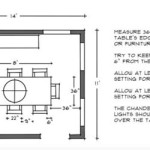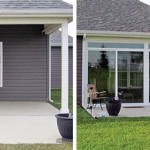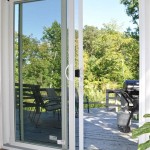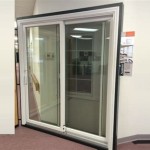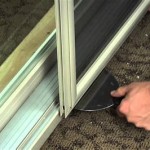```html
Paver Patios Cost: A Comprehensive Guide
The installation of a paver patio represents a significant investment in outdoor living space enhancement. Determining the cost associated with such a project involves analyzing multiple factors, each contributing to the final price. This article provides a detailed examination of these cost determinants, offering a comprehensive understanding of the financial considerations involved in constructing a paver patio.
Key Factors Influencing Paver Patio Cost
Several key factors directly impact the overall cost of a paver patio. These include the type of pavers selected, the size and complexity of the patio design, the level of site preparation required, and the cost of labor. Each of these elements warrants individual consideration to accurately estimate the total project expense.
Paver Material: The choice of paver material is a primary cost driver. Pavers are available in a variety of materials, including concrete, brick, natural stone (such as flagstone, travertine, and bluestone), and porcelain. Concrete pavers are generally the most affordable option, offering a wide range of colors, shapes, and patterns. Brick pavers provide a classic aesthetic and are typically more expensive than concrete. Natural stone pavers offer a premium look and feel but come with a higher price tag due to extraction, processing, and transportation costs. Porcelain pavers are becoming increasingly popular due to their durability, stain resistance, and aesthetic versatility, although they typically fall into the mid to high price range.
The specific type of paver within each material category also influences the price. For example, interlocking concrete pavers are often less expensive than larger format concrete pavers. Similarly, the grade and thickness of natural stone pavers can significantly affect their cost. Specialty finishes, such as tumbled or antiqued pavers, also contribute to a higher price point.
Patio Size and Design Complexity: The size of the patio directly correlates with the amount of materials and labor required, thus influencing the overall cost. A larger patio necessitates more pavers, base materials, and time for installation. The complexity of the design also plays a crucial role. Intricate patterns, curves, and multiple levels require more skill and time to execute, leading to increased labor costs. Simple rectangular or square patios are generally the most cost-effective to install.
Furthermore, the presence of features such as integrated seating, fire pits, or outdoor kitchens adds to the overall complexity and cost. These features require additional planning, materials, and specialized labor, impacting the final project budget.
Site Preparation: Adequate site preparation is essential for the long-term stability and durability of a paver patio. This process often involves excavation, grading, and compaction of the sub-base. The extent of site preparation required depends on the existing soil conditions and the topography of the area. If the soil is unstable or poorly drained, additional measures such as soil stabilization or drainage installation may be necessary, increasing the overall cost.
Removing existing structures, such as old patios or landscaping features, also contributes to site preparation costs. Similarly, if the site is difficult to access, requiring manual labor or specialized equipment, the cost of site preparation will likely increase.
Labor Costs: Labor costs constitute a significant portion of the total paver patio cost. These costs vary depending on the location, the experience of the contractor, and the complexity of the project. Experienced contractors typically charge higher rates due to their expertise and ability to efficiently manage the project. Obtaining multiple quotes from reputable contractors is crucial for comparing labor costs and ensuring fair pricing.
Labor costs include not only the installation of the pavers but also the site preparation, base material installation, cutting, and finishing work. Complex designs or features, such as custom borders or intricate patterns, require more skilled labor and time, resulting in higher labor costs.
Detailed Breakdown of Paver Patio Costs
To provide a clearer understanding of the cost components, a detailed breakdown of the typical expenses associated with paver patio installation is presented below.
Materials Costs: This category encompasses the cost of all materials used in the project, including pavers, base materials (such as gravel and sand), edging materials, polymeric sand, and any necessary sealants or cleaners. The cost of pavers typically ranges from $3 to $15 per square foot, depending on the material and style. Base materials usually cost between $0.50 and $2 per square foot. Edging materials, such as concrete restraints or steel edging, can range from $2 to $10 per linear foot.
The quantity of materials required depends on the size of the patio and the thickness of the base materials. A typical paver patio requires a base layer of gravel that is 4 to 6 inches thick, followed by a layer of sand that is 1 to 2 inches thick. Accurate material estimation is crucial for avoiding cost overruns.
Labor Costs: Labor costs are typically estimated on a per-square-foot basis or as a lump sum for the entire project. The cost of labor can range from $5 to $15 per square foot, depending on the factors mentioned earlier. This cost includes site preparation, base material installation, paver installation, cutting, and finishing work.
It is important to obtain a detailed breakdown of the labor costs from each contractor to understand exactly what is included in their quote. This will help to ensure that all necessary tasks are accounted for and that there are no hidden fees.
Equipment Rental Costs: Depending on the scope of the project, equipment rental costs may be necessary. This can include equipment such as excavators, skid steers, plate compactors, and concrete saws. The cost of renting this equipment can range from $50 to $500 per day, depending on the type of equipment and the rental period.
Contractors often factor equipment rental costs into their overall labor costs. However, if the homeowner is undertaking the project themselves, they will need to factor in these costs separately.
Permit Fees: In some areas, a permit may be required for paver patio installation. Permit fees vary depending on the location and the size of the patio. It is important to check with the local building department to determine if a permit is required and what the associated fees are.
Failure to obtain the necessary permits can result in fines or delays in the project.
Strategies for Managing Paver Patio Costs
While paver patio installation represents a significant investment, several strategies can be employed to manage costs effectively.
Obtain Multiple Quotes: Obtaining quotes from at least three reputable contractors is crucial for comparing prices and ensuring fair pricing. Ensure that each quote includes a detailed breakdown of the materials, labor, and equipment costs. This will allow for a more accurate comparison of the overall cost and the scope of work included.
Choose Cost-Effective Paver Materials: Selecting more affordable paver materials, such as concrete pavers, can significantly reduce the overall cost. Explore different styles and patterns of concrete pavers to find options that fit the desired aesthetic while staying within budget.
Simplify the Design: Opting for a simpler patio design, such as a rectangular or square shape, can reduce labor costs and material waste. Avoid complex patterns, curves, or multiple levels, which require more skilled labor and time to execute.
DIY (If Appropriate): If the homeowner possesses the necessary skills and experience, undertaking the project themselves can save on labor costs. However, it is important to carefully assess one's capabilities and the complexity of the project before attempting a DIY installation. Improper installation can lead to structural issues and costly repairs in the future.
Phase the Project: Consider phasing the project over time to spread out the costs. For example, installing the main patio area first and adding features such as integrated seating or a fire pit at a later date can make the project more manageable financially.
Negotiate Prices: Do not hesitate to negotiate prices with contractors and material suppliers. Often, they are willing to offer discounts or negotiate on pricing, especially if the homeowner is willing to pay in cash or purchase materials in bulk.
Consider Off-Season Installation: Paver patio installation is often less expensive during the off-season (typically late fall or winter) due to decreased demand. Contractors may be willing to offer discounts during this time to keep their crews busy.
By carefully considering these factors and implementing these cost-management strategies, homeowners can effectively control the expenses associated with paver patio installation and create a beautiful and functional outdoor living space within their budget.
```
How Much Does A Patio Cost Installation 2024 Landscaping Network

How Much Does A New Patio Cost To Build

How Much Does It Cost To Install Patio Pavers Whitehouse Landscaping

How Much Does It Cost To Build A Paver Patio

Average Flagstone Patio S In 2024 Forbes Home

Cost To Install A Patio 2024 Calculator

Paver Cost Landscaping Network

How Much Does A 20x20 Paver Patio Cost The Sealer

So How Much Does A Paver Patio Actually Cost Hardscape Toledo

2024 Patio Cost Average To Build And Install A Angi

